
Know Your Chances
This book has been shown in two randomized trials to improve peoples' understanding of risk in the context of health care choices.
| 0 Comments | Evaluated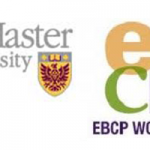
McMaster Evidence-Based Clinical Practice Workshop Resources – Therapy module
McMaster Evidence-Based Clinical Practice Workshop – Therapy module.
| 0 Comments
McMaster Evidence-Based Clinical Practice Workshop Resources – Systematic review module
McMaster Evidence-Based Clinical Practice Workshop – Systematic review module.
| 0 Comments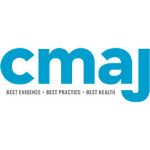
Basic statistics for clinicians: 1. Hypothesis testing
The statistical concepts of hypothesis testing and p values.
| 0 Comments
Basic statistics for clinicians: 2. Interpreting study results: confidence intervals
Interpreting study results: confidence intervals.
| 0 Comments
Basic statistics for clinicians: 3. Assessing the effects of treatment: measures of association
Assessing the effects of treatment: measures of association.
| 0 Comments
The interpretation of clinical trials
Peter Greenberg’s 9-minute read on the interpretation of clinical trials.
| 0 Comments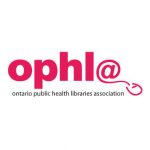
Critical Appraisal of Research Evidence 101
Ontario Public Health Libraries Association guide to critical appraisal of research evidence.
| 0 Comments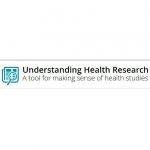
Understanding Health Research, a tool for making sense of health studies: use of statistics
In health research, researchers typically use statistics to determine statistical significance and effect size.
| 0 Comments
Understanding Health Research: A tool for making sense of health studies
An interactive online tool designed to help anybody to understand scientific health research evidence.
| 0 Comments
Reading the Medical literature
American College of Obstetricians and Gynaecologists (ACOG) introduction to critical appraisal and evidence-based medicine.
| 0 Comments
University of Western Australia: Bias Minimisation, randomisation and blinding
University of Western Australia’s explanation of why random allocation to comparison groups and blinding (if possible) are important.
| 0 Comments
Evaluating relevance
How to evaluate relevance of research in Michigan State University’s Evidence-Based Medicine Course.
| 0 Comments
Evidence-Based and Shared-Informed Decision-Making According to Homer (Simpson)
With help from Homer Simpson, James McCormack uses a 17-minute slide cast to explain the principles of thoughtful treatment.
| 0 Comments
‘Tricks to help you get the result you want from your study (S4BE)
Inspired by a chapter in Ben Goldacre’s ‘Bad Science’, medical student Sam Marks shows you how to fiddle research results.
| 0 Comments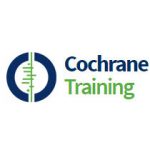
The Princess and the p-value
An interactive resource introducing reporting and interpretation of statistics in controlled trials.
| 0 Comments
Sampling error, the unspoken issue behind small number changes in the news
Ben Goldacre stresses the importance of taking account of “sampling variability” and confidence intervals.
| 0 Comments
Critical appraisal
University of New South Wales Medical Statistics Tutorial 4 addresses Critical Appraisal.
| 0 Comments
Probability and tests of statistical significance
University of New South Wales Medical Statistics Tutorial 6 addresses ‘Probability and tests of statistical significance’.
| 0 Comments
Quantifying uncertainty in treatment comparisons
Small studies in which few outcome events occur are usually not informative and the results are sometimes seriously misleading.
| 0 Comments
Critical appraisal of clinical trials
Slides developed by Amanda Burls for an interactive presentation covering the most important features of well controlled trials.
| 0 Comments
GenerationR – The importance of involving children and young people in research
3/3, 22-min video at the launch of GenerationR, a network of young people who advise researchers.
| 0 Comments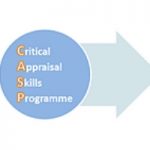
Clinical Significance – CASP
To understand results of a trial it is important to understand the question it was asking.
| 0 Comments
Making sense of results – CASP
This module introduces the key concepts required to make sense of statistical information presented in research papers.
| 0 Comments
Significant Others
Statistical significance does not always mean meaningful or practical significance.
| 0 Comments
False Precision
The use of p-values to indicate the probability of something occurring by chance may be misleading.
| 0 Comments
Personal “No Worse”
People with vested interests may use misleading statistics to support claims about the effects of new treatments.
| 0 Comments
P-values and the role of chance
Gilbert Welch’s 10-min video on p-values and assessing the likelihood that a difference between treatments is due to chance.
| 0 Comments
Mixed Messages about Statistical Significance
A webpage explaining the difference between statistical and practical significance.
| 0 Comments
Statistical Significance and Practical Significance
Keith Bower’s 3-min video discussing the difference between Statistical Significance and Practical Significance.
| 0 Comments
Type I and Type II errors, and how statistical tests can be misleading
Gilbert Welch’s 12-min video explaining Type I and Type II errors, and how statistical tests can be misleading.
| 0 Comments
Methodology of clinical trials
Eurordis training on the methodology of clinical trials for representatives of patients’ organisations.
| 0 Comments
Reporting results of studies
Dr Chris Cates' article discussing how to report study results, with emphasis on P-values and confidence intervals.
| 0 Comments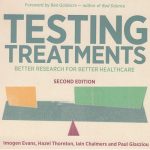
คำถามที่ 3 : สถิติชวนสับสน ผู้ป่วยควรดูตัวเลขเหล่านี้จริงหรือ
วิธีนำเสนอตัวเลขอาจชวนให้ขยาด หรือกระทั่งทำให้เข้าใจผิดสิ้นเชิง แต่ถ้าต้องการเปรียบเทียบวิธีการรักษา 2 วิธี หรืออยากรู้จริงๆ ว่าโรคที่ตนเป็นส่งผลต่อผู้ป่วยรายอื่นอย่างไร ก็ต้องมีตัวเลขมาเกี่ยวข้องอยู่ดี แต่วิธีนำเสนอตัวเลขบางวิธีอาจเป็นประโยชน์เมื่อเทียบกับวิธีอื่น วิธีดีที่สุดที่ทำให้ตัวเลขสื่อความได้ในประชาชนทั่วไป (และแพทย์ !) คือการใช้ค่าความถี่ ซึ่งเป็นเลขจำนวนเต็ม โดยทั่วไปจึงควรบอกว่า 15 คนใน 100 คน แทนที่จะบอกว่าร้อยละ […]
| 1 Comment
“มีนัยสำคัญทางสถิติ” หมายความว่าอย่างไร
“อันที่จริงการมีนัยสำคัญทางสถิติเป็นแนวคิดที่ยุ่งยาก มันบอกเราได้ว่าความแตกต่างเกิดจากความบังเอิญหรือไม่ เช่น ระหว่างยาจริงกับยาหลอก หรือระหว่างอายุคาดเฉลยของคน 2 กลุ่ม…โดยแปล ว่าความแตกต่างเท่าที่สังเกตพบไม่น่าจะเกิดเพียงเพราะบังเอิญ นักสถิติใช้ระดับมาตรฐานของการที่ ‘ไม่น่าจะบังเอิญ’ โดยทั่วไปใช้นัยสำคัญที่ร้อยละ 5 (อาจเขียนได้ว่า p = 0.05) ในกรณีนี้จะถือว่าความแตกต่างนั้นๆ ‘มีนัยสำคัญ’ เมื่อมีโอกาสน้อยกว่า 1 […]
| 0 Comments
วิธีการรักษา “แตกต่างอย่างมีนัยสำคัญ” แปลว่าอะไร
คำถามนี้ตอบยาก เพราะ “ความแตกต่างที่มีนัยสำคัญ” อาจแปลได้หลายอย่าง อย่างแรก คือ ความแตกต่างที่สำคัญต่อผู้ป่วยจริง ทว่าเมื่อผู้เขียนรายงานวิจัยกล่าวว่าวิธีการรักษา “แตกต่างอย่างมีนัยสำคัญ” พวกเขามักหมายถึง “ความแตกต่างทางสถิติ” ทั้งนี้ “ความแตกต่างที่มีนัยสำคัญทางสถิติ” อาจไม่ได้ “มีนัยสำคัญ” ในความหมายที่ใช้กันทั่วไป “ความแตกต่าง” ระหว่างวิธีการรักษา “ที่มีนัยสำคัญทางสถิติ” ซึ่งก็คือ […]
| 2 CommentsNo Resources Found
Try clearing your filters or selecting different ones.
